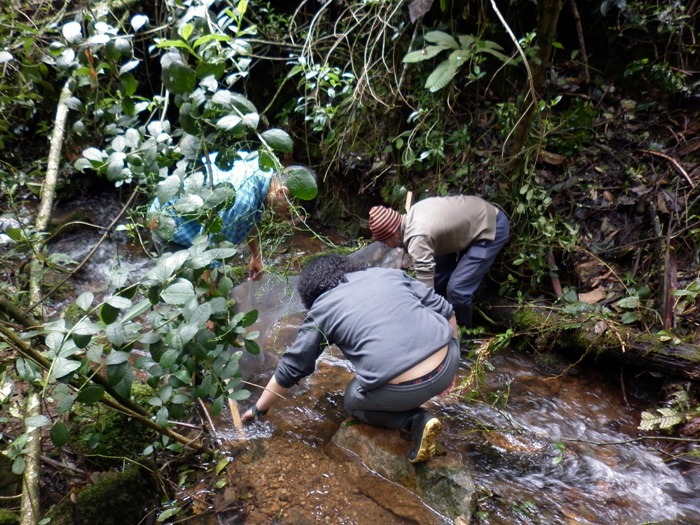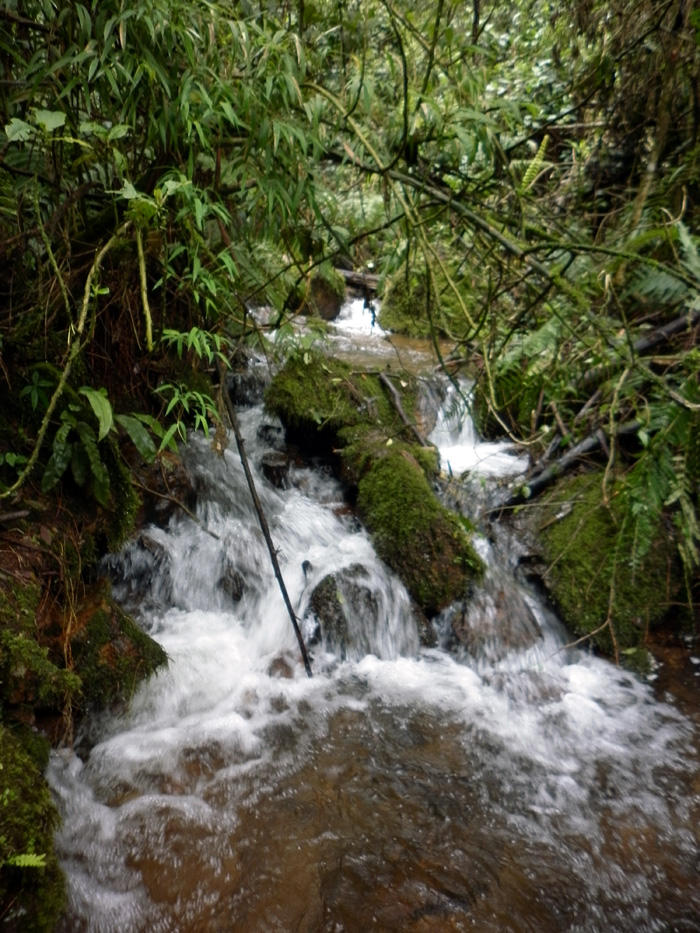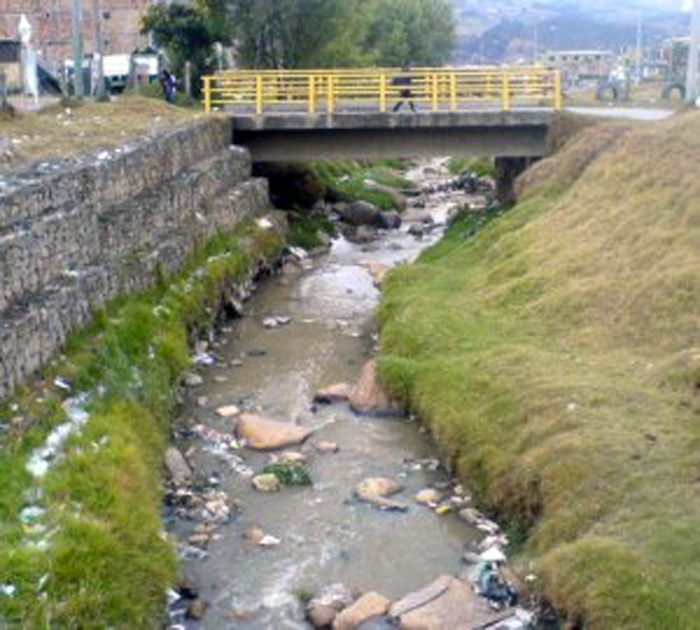This initiative of the PhD in Zoology and associate professor of the Biology Department of the Faculty of Sciences at Universidad Nacional de Colombia is based on the richness of this ecosystem, which has not been significantly altered by humans.
This small creek, which is born one kilometer and a half up in the mountains from Avenida Circunvalar and Street 72nd, "is a jewel that we have to take care of and enjoy, since it is not contaminated at all," asserted Ospina, who has led several undergraduate, master and doctorate investigations on different topics regarding this water source since 2002.
The only intervention to this water source has been the canalization of its water under Circunvalar Avenue, and the planting of pines and eucalyptuses in some parts around it.
From the functional ecological perspective, which asserts that a river is more than just its water, the studies performed in La Vieja creek have focused their research on the substrates present in the water, and the fauna and flora that are part of this ecosystem.
"This creek and its water could become into a living laboratory for the city and, obviously, for education institutions. The advantages are that it is close to research centers, which reduces costs, in a mountain ecosystem, and it is in really good conditions compared to other sources of water in the city," asserted the professor.
However, the researcher mentioned that "ironically, at this moment, Empresa de Acueducto y Alcantarillado de Bogota does not want to give permission to continue the research labor in this place. The argument they use is the rainy season, despite the fact that this creek is characterized by its low flow."
Creeks in Bogota and the Savannah, according to Ospina, can be geographically divided into two groups: those in the hills and those on the plains.
"Those on the plains are in really bad conditions, they are almost channels without any vegetation and very contaminated. The situation of the water sources in the hills is a testimony of the city"s social stratification: those water sources located from street 72nd towards the north are relatively in good conditions, while those located in the south are an environmental disaster since they have lost their vegetation, they are garbage deposits and they have lost their function as water regulators and material conveyors," explained professor Ospina Torres.
The restoration of these water sources could take a couple of years, if resources were available. A project to solve this problem was proposed five years ago by Empresa de Acueducto y Alcantarillado de Bogota and Universidad Nacional de Colombia, an idea that is important to recover.
 Correo Electrónico
Correo Electrónico
 DNINFOA - SIA
DNINFOA - SIA
 Bibliotecas
Bibliotecas
 Convocatorias
Convocatorias
 Identidad UNAL
Identidad UNAL





